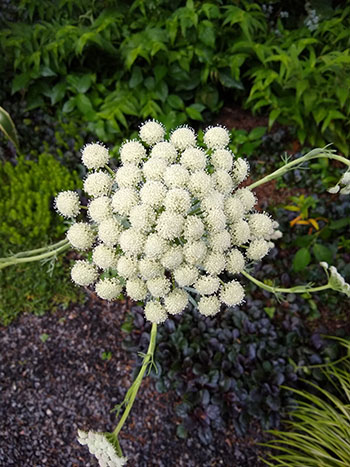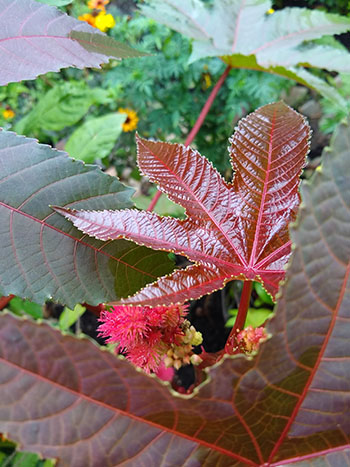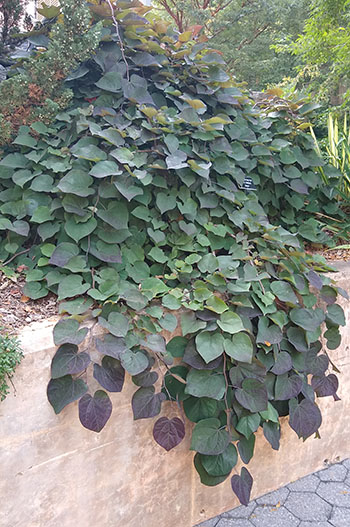
Plants of the Week: August 2
Guest Author: Ellie Hollo

Seseli gummiferum, moon carrot is a biennial member of the Apiaceae family. It resembles a common edible carrot (Daucus carota), but with a few twists. Moon carrot has lacey, silvery-blue foliage, along with a silvery-blue stem. It features the classic umbel flowers of the Apiaceae family, though moon carrot flowers are bluish-white and have a spongier appearance than edible carrot flowers. Moon carrots do well in full sun, but because they are biennials, they will only flower their second year. Once the plant flowers in its second year, it will die, having completed its life-cycle. Moon carrot self-seeds in very easily, so monitor your garden for tiny seedlings if you don’t want a large cluster the next year. You can see moon carrots in bloom in the Scott Entrance Garden by the succulent planters or in the Harry Wood Garden. Photo credit: E. Holllo

Ricinus communis, castor bean plants are probably best known as the source of deadly poison ricin, but they also feature gorgeous foliage and fruit, making them a worthy addition to any sunny garden. Castor bean plants are native to tropical East Africa, but they are naturalized in many tropical regions around the world. Since southeastern Pennsylvania is not a tropical climate, caster bean plants grow as annuals here, although in tropical climates they are woody perennials.
Castor bean plants have glossy, star-shaped leaves, and the ‘Carmencita’ plant has pink veins and a maroon tint. The hot pink, spiky seed pods may be the most eye-catching feature of a castor bean plant. Castor bean seeds are extremely poisonous, so do not consume any and keep them away from small children and pets. To see some spectacular castor bean plants in bloom at Scott Arboretum, stop by the Cut Flower Garden or the West Garden. Photo credit: E. Hollo

Well, this Plant of the Week entry wouldn’t be complete without mention of a Cercis cultivar, so here’s this week’s: Cercis canadensis ‘Ruby Falls.’ The ‘Ruby Falls’ cultivar of the Eastern redbud has weeping branches adorned with dark reddish purple heart-shaped leaves. ‘Ruby Falls,’ developed at North Carolina State University, is a cross between the ‘Forest Pansy’ redbud, which has reddish purple leaves but an upright form, and the ‘Covey’ redbud, which has a weeping form but green leaves. Like other redbud cultivars, ‘Ruby Falls’ features bright spring flowers. If you admire weeping cherry trees, consider ‘Ruby Falls’ as a native alternative which will support our native pollinators and birds. I was especially drawn to this redbud cultivar because of the way Scott Arboretum’s particular tree drapes gracefully down the wall in the Winter Garden. Photo credit: E. Hollo





No Comments